The evolution of Colorado State University’s Art and Art History department is tied to the space it is housed in. The current building is somewhat of an anomaly on campus, as it occupies nearly 85,000 square feet of space in a single story. The building’s layout, challenging to navigate for newcomers, is a central hallway that connects different wings, each housing one of the department’s 12 concentrations. It is filled with the characteristic natural light of Colorado, a feature of the glass skylights that ring the building. Art overflows into hallways and the multiple courtyards that make up the building’s footprint. It is home to studios, seminar rooms, lecture spaces, computer and fabrication labs. Workspace is available and graduate students are given their own dedicated studio space. The building’s five galleries house an impressive rotation of student, faculty, and national and international artists’ work.
The building often feels alive and fills with energy and vibrancy when classes are in session. In many ways, it is a growing, ever-changing organism that responds to the needs of its inhabitants. The painted cinderblock, while quite industrial, functions as a blank canvas for students, faculty, and staff to create art and as a place to work, learn, create, collaborate, and grow. Having dedicated space for the creation, exhibition, and experience of art is fundamental for successful artists. It allows for dreaming, experimentation, and collaboration to occur organically.
Art is research into creative processes, aesthetics, individual identity, and the navigation of contemporary society’s complexity. Studying art is about obtaining visual communication skills, a critical eye, and the craft to make one’s imagination a reality. The visual arts express the breadth of human experience, challenge social norms, and shift individual attitudes. By doing so, art has the potential to shift culture.
Visual arts are fundamental for a rich intellectual life and, as part of a land-grant university, the Department of Art and Art History believes that the practice, understanding, and exposure to art should be available to all citizens of Colorado. The persistence of vision that has been acted on by department leadership, faculty and staff’s dedication and passion, and student involvement have laid a solid foundation and provided legitimacy for the study and exhibition of art and art history at CSU.
1883
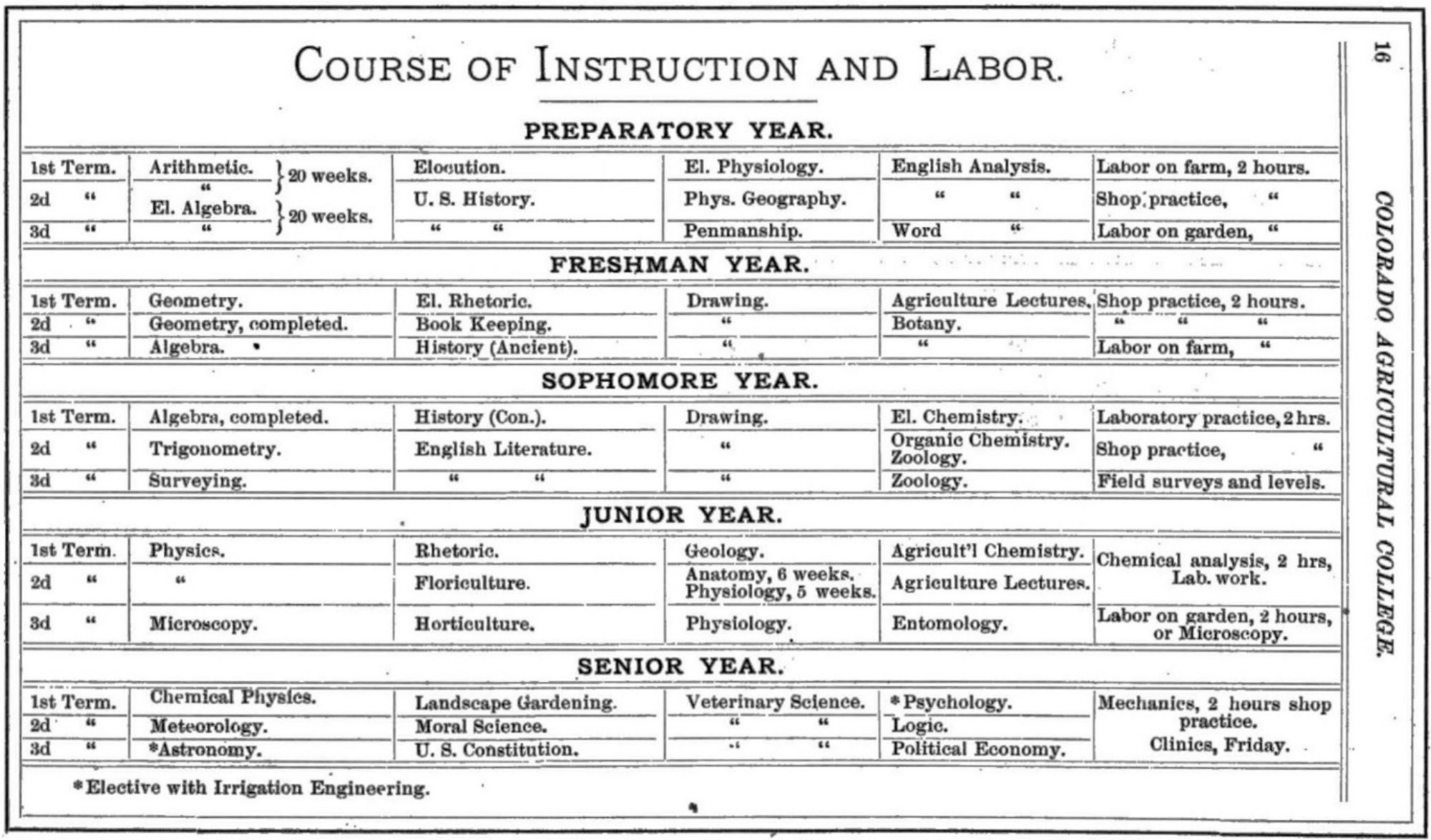
The storied history of the department starts in 1883, when drawing classes were introduced as part of core curriculum at Colorado Agricultural College. These classes were taught by James Lawrence, Professor of Mechanics and Drawing. It is clear from the course descriptions in the class catalog from 1884 that most of the classes included drawing as part of their course of study. Above is an image from the 1883-84 Registrar of the Colorado Agricultural College outlining the curriculum.
1894
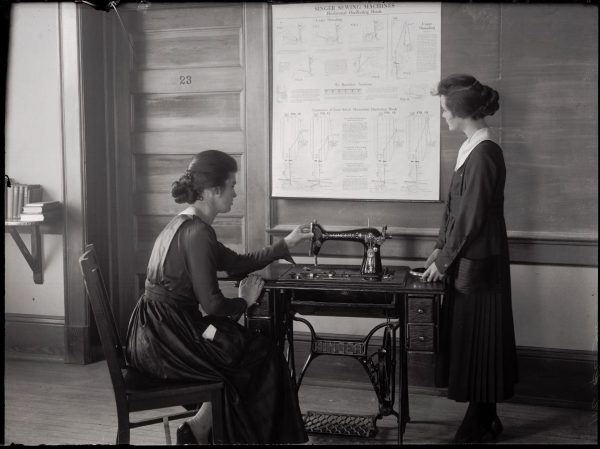
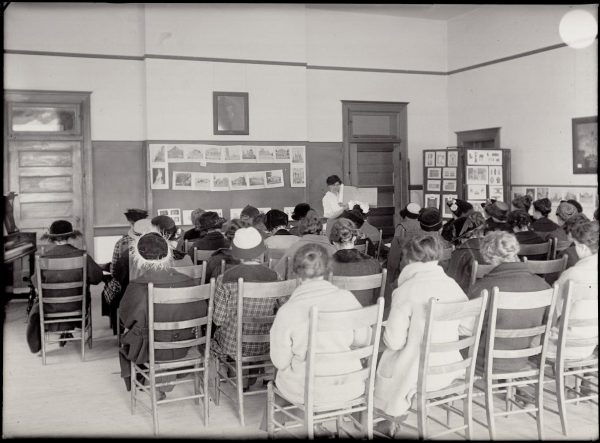
In 1894, the department was developed into a Domestic Economy department overseen by Theodosia Adams. It offered classes in the chemistry of cooking, home hygiene (germ theory), household economics, nursing, and the applied arts: sewing, decorating, paper arts. The photo on the left, from 1919, shows a demonstration of a home sewing machine. The photo on the right, undated (though probably from the 1920s), is a class in the domestic arts.
1936
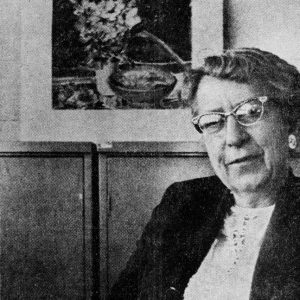
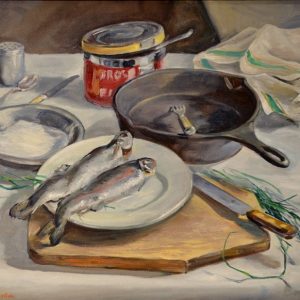
In 1936, Clara Hatton (1901-1991) came to Colorado A&M College in Fort Collins as one of the earliest faculty members to teach design in the Division of Home Economics. By 1949, she established and headed a department in the related arts, which was housed in home economics. Over the next thirty years, Hatton built a fine arts curriculum at the college, teaching a variety of media herself and hiring the faculty who would help her establish the Department of Art in 1953. An upcoming exhibition at the Gregory Allicar Museum of Art demonstrates the breadth of Clara Hatton’s artwork--from bookbinding to oil painting, printmaking to calligraphy, ceramics to weaving--and honors the founder of the Department of Art & Art History at Colorado State University.
On the left, Hatton is pictured in 1964 at her desk in the Humanities building. The right image is one of her still life paintings.
Upcoming Exhibition
Clara Hatton: A Vision for Art at CSU
May 30, 2020 – September 5, 2020
Works on Paper Gallery
Gregory Allicar Museum of Art
Colorado State University
1956
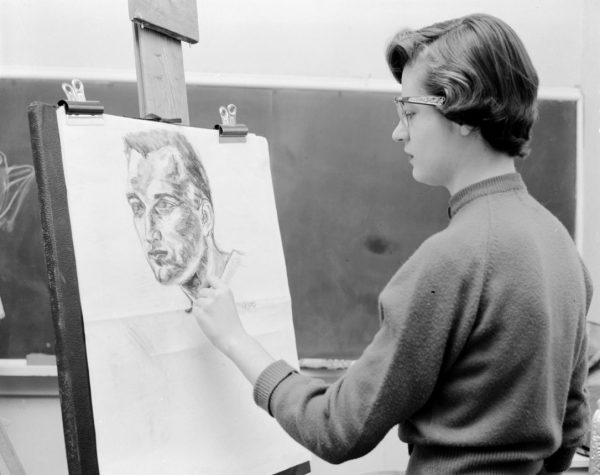
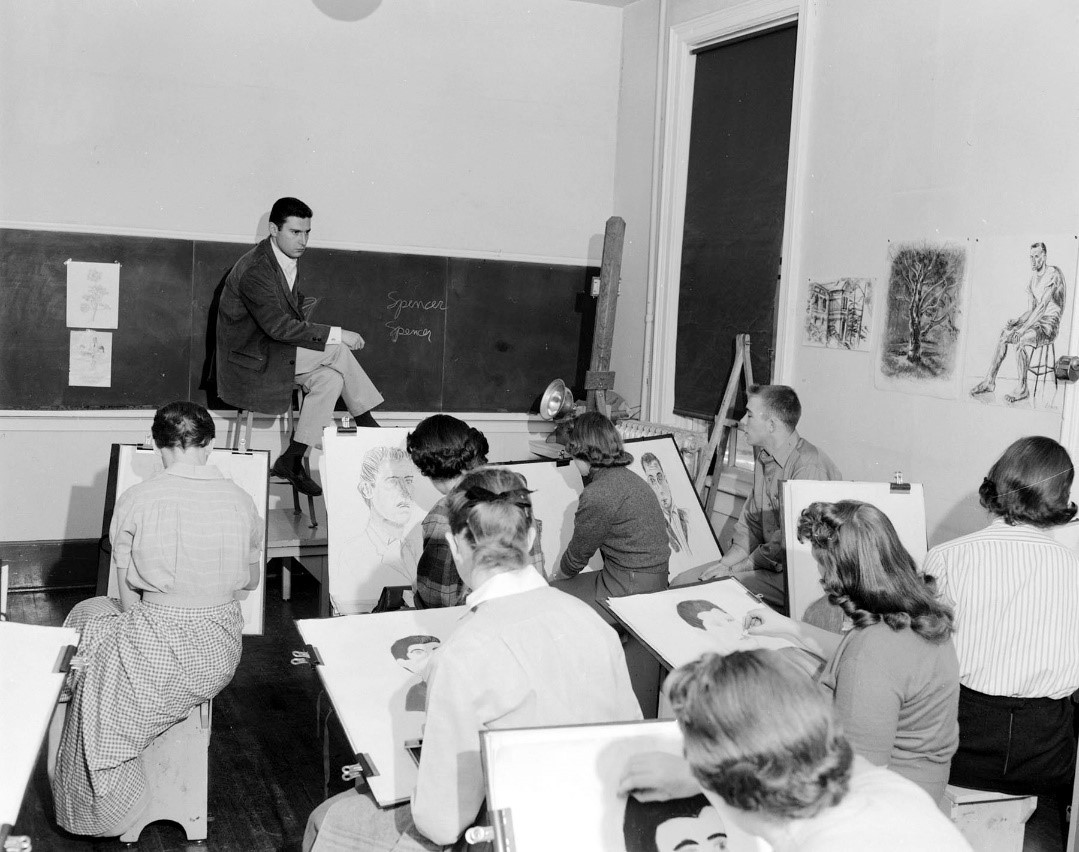
Figure Drawing classes in 1956 in a converted classroom.
1960s

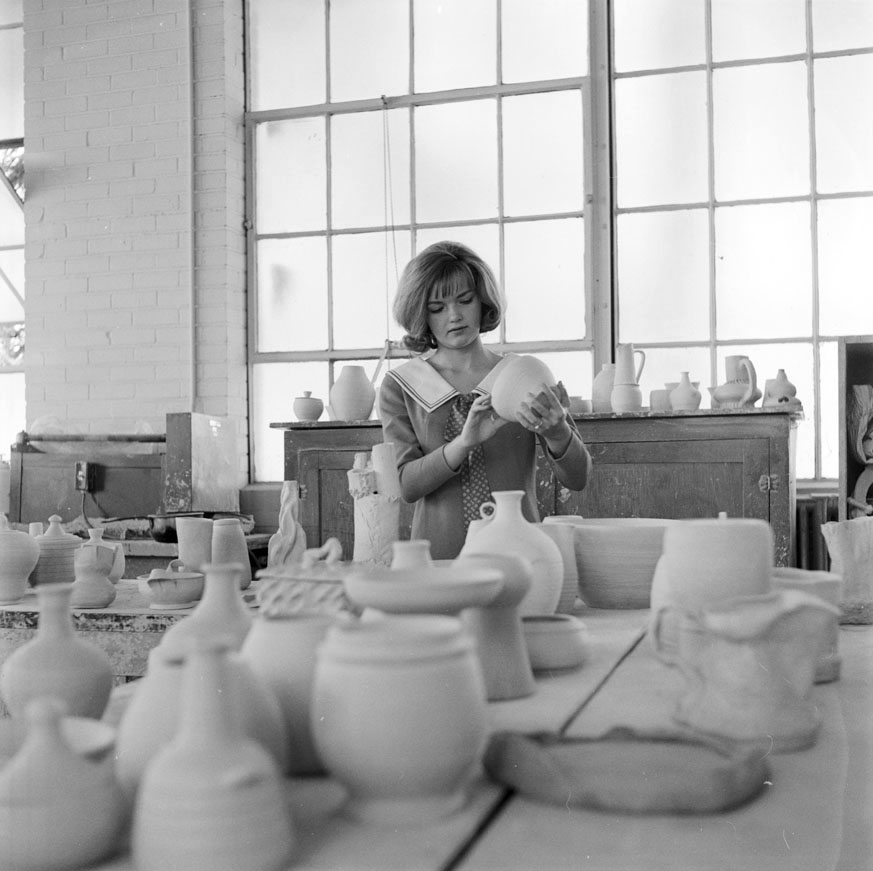
Under Ms. Hatton’s leadership, the department officially becomes the Department of Art and is housed in the College of Science and Arts. A Bachelor of Art degree is offered in drawing, painting, graphic design, interior design, pottery, weaving, and art history. These images from 1965 show the painting and pottery workspaces in the Old Main Annex.
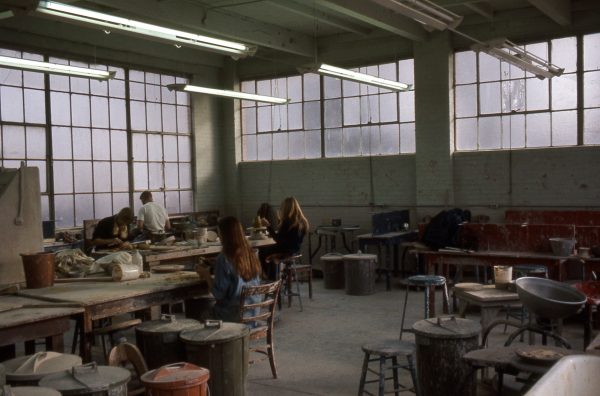
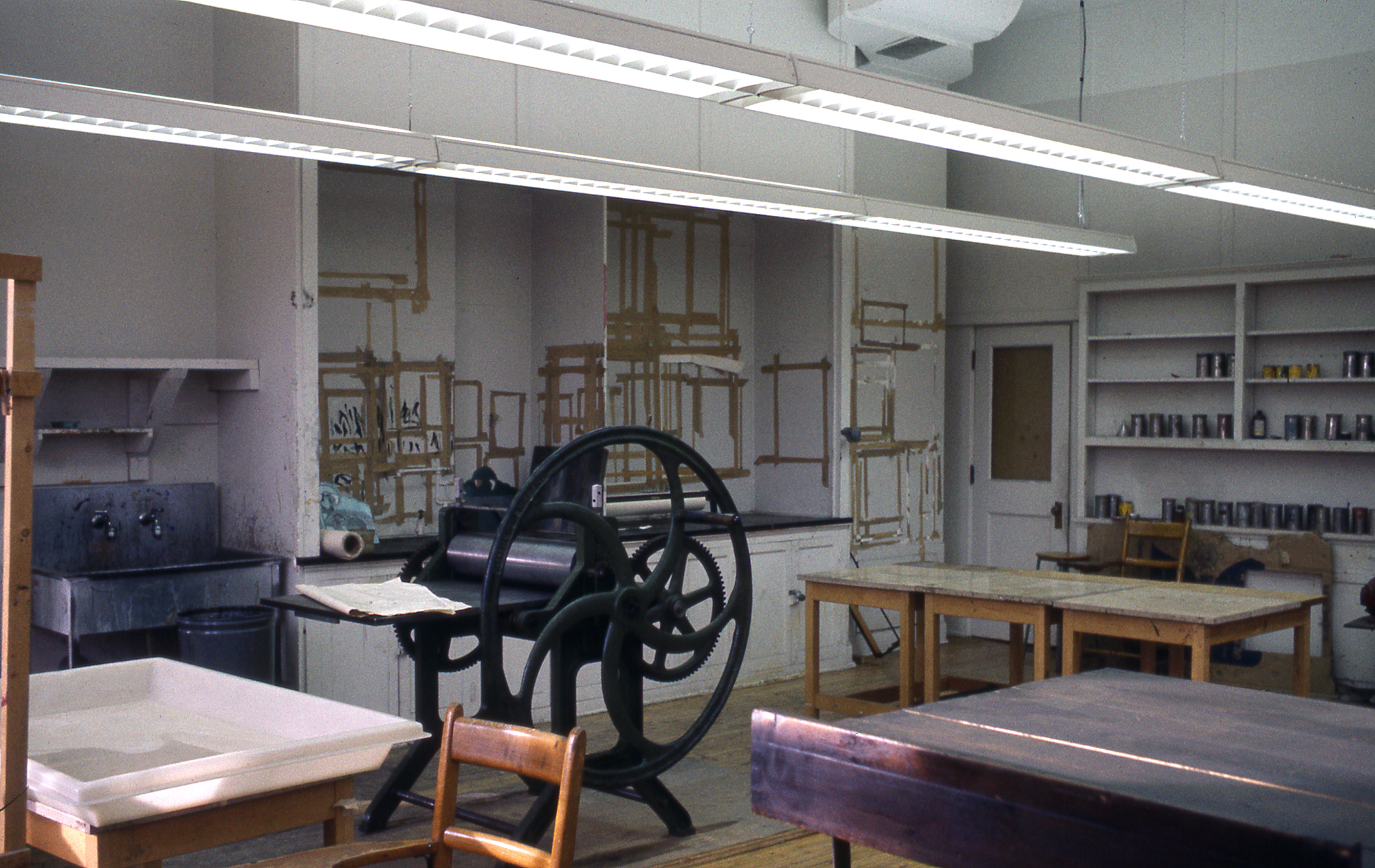
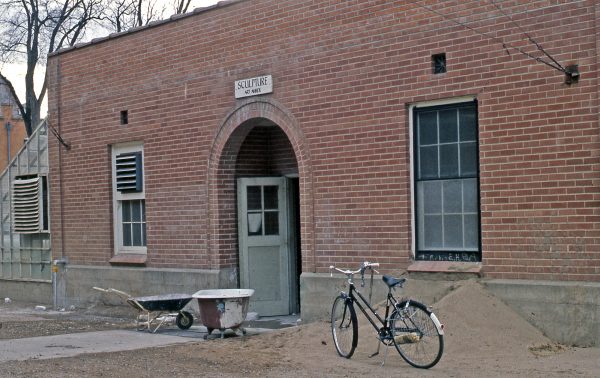
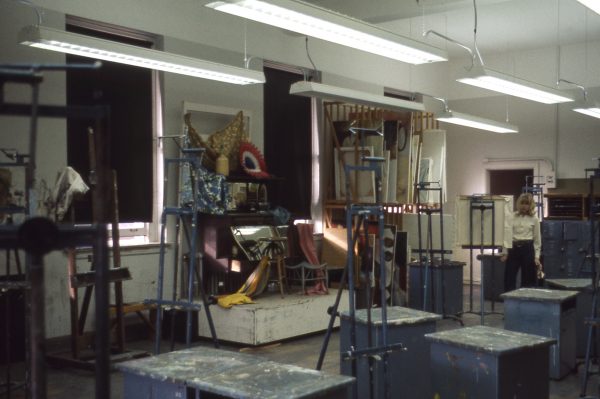
During Hatton’s time at CSU, the art department was scattered around the campus and occupied space in the Old Main Annex, Spruce Hall, and other buildings. Facilities were adapted from regular classroom space and were notoriously inadequate and hazardous. Taken by Perry Ragouzis in 1968 or 1969, these photos show the facilities in the Old Main Annex for pottery, printmaking, and painting.
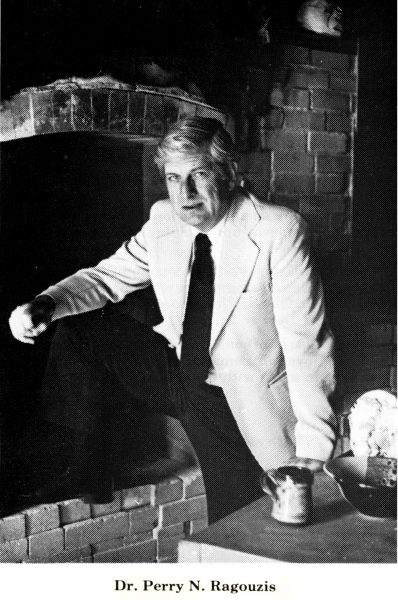
After Hatton’s retirement in 1966, Perry Ragouzis joined CSU as the head of the art department and focused on the curriculum and building a dedicated facility. He was adamant that curriculum needed to come first and that the facility should be designed to fit curricular needs, an idea that continues to shape the department to this day. In the first few years of his time at CSU, a Bachelor of Fine Art was added to the department. Under his leadership, a parent-driven organization, the Citizens Committee for Art, was formed to assist efforts in the construction of a new building.
1970s
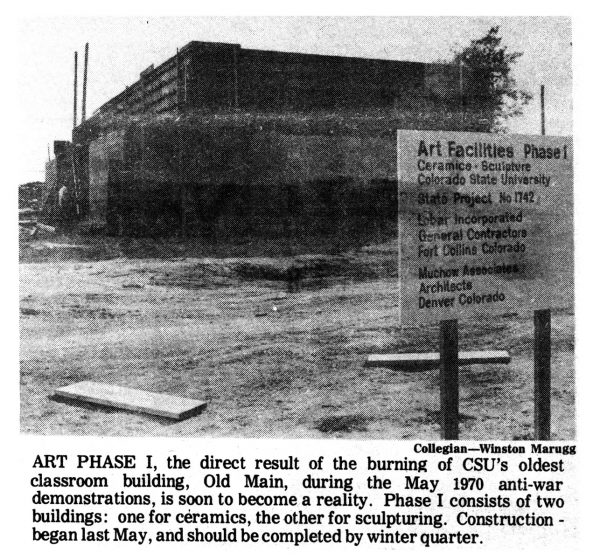
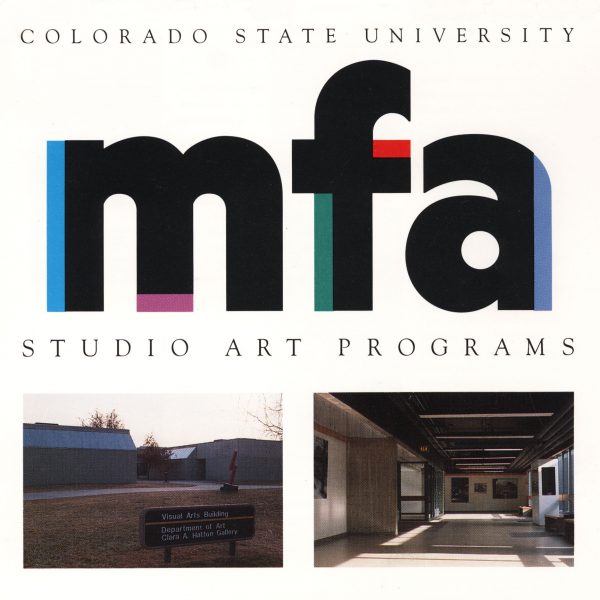
1973 was a milestone for the department. Phase 1 of the new Visual Art Building, which housed pottery and sculpture, was completed and ground was broken for Phase II. An MFA was added to the curriculum, further supporting the professional practice of studio art.
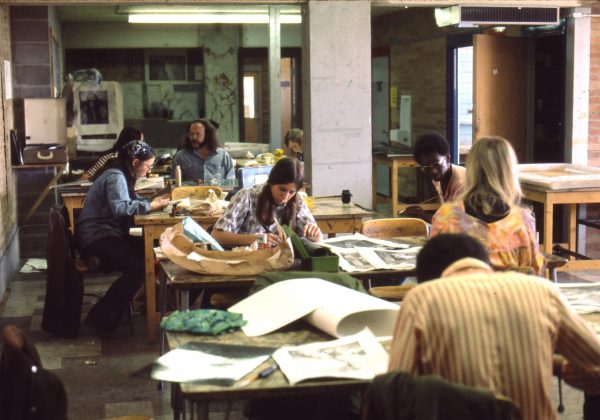
While the building was being constructed, classes were still being held in other buildings across campus. This printmaking class in 1975 was held in Aylesworth Hall.
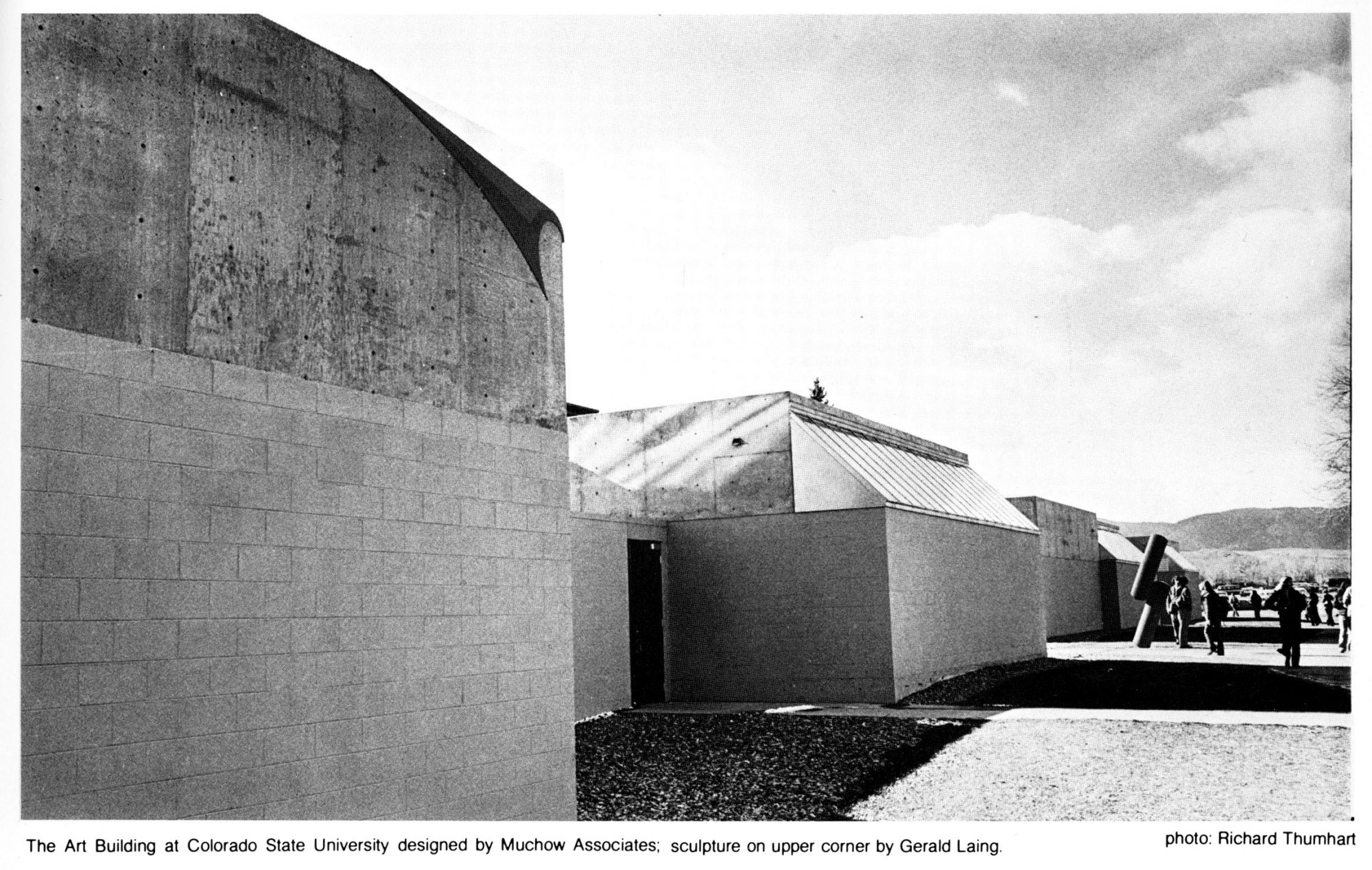
The same year, Phase II of the building was completed and housed all concentrations, administration, classrooms, and gallery spaces, including the Hatton Gallery. The building received awards for design and was featured in Domus Magazine in the late '70s.
The 1970s and 1980s were huge for the department. Because of the vision of the leadership and the investment in the facilities, CSU hosted an exhibition of American Masters prints, designed by Jack Curfman, and the 1st bi-annual CIIPE show.
1980s-90s
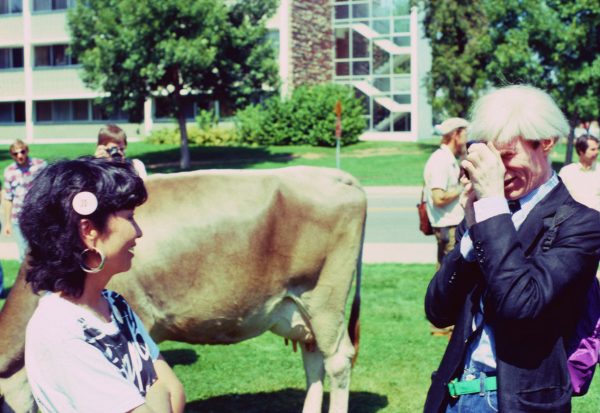
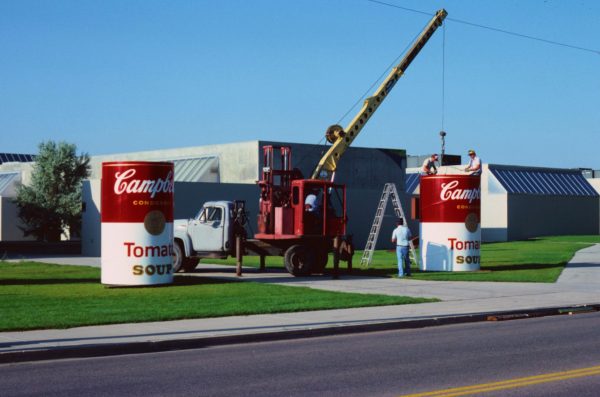
In the 1980s, Andy Warhol’s Soup Cans were installed in front of the Visual Art Building and Warhol visited the University in 1981.
1985 saw an anonymous $1 million dollar donation to support the growth of the Wold Resource Center as well as to support visiting artists and critics, access to the World Wide Web, and the visits of internationally recognized artists such as Christo and Jean-Claude and Robert Rauschenberg.
By the 1990s, the department had 700 students enrolled, many of them studying graphic design.
2000s
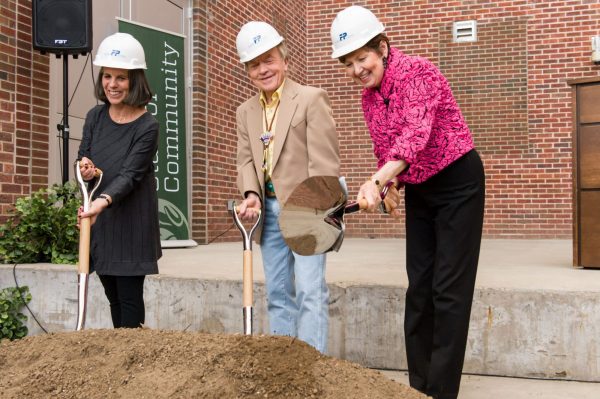
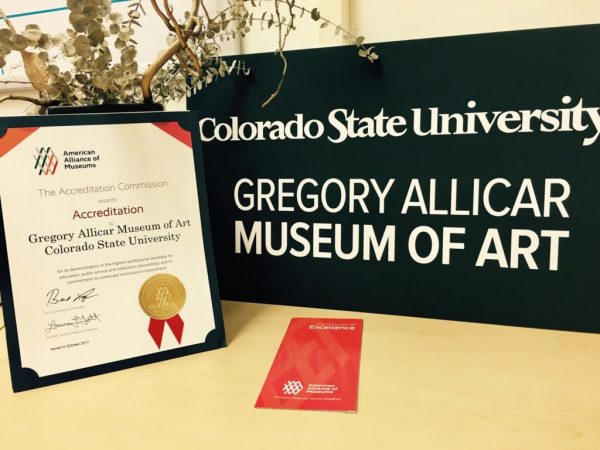
In 2009, with the longtime work of museum director Linny Frickman, the University Art Museum became the Gregory Allicar Museum of Art, supported by a $2M gift by an anonymous donor as well as the Hartford-Tandstad art collection. Containing 3,500 works of art, with 10,000 square feet of gallery space, the nationally accredited museum is a gem of Colorado State University’s arts initiative and serves as a link to local, regional, and national communities.
Today, the department continues to teach traditional practices alongside new mediums and digital tools. Students are challenged to research and engage in a variety of investigative techniques in the fields of fibers, sculpture, metalsmithing, electronic art, drawing, printmaking, graphic design, painting, photo image making, art education, and art history. The foundations program provides students with the technical skill sets to build their unique personal practice.
By engaging with both traditional and new media, such as 3D scanning and printing, a 3-Axis CNC router, and computer-based+ interactive media, students learn how to be part of a tradition and history, as well as shape the future of art, art education, and cultural dialog.
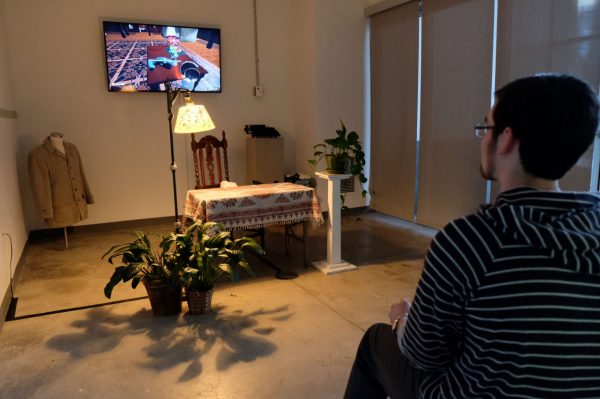
The electronic arts concentration was added in 2013 and opened its own gallery in 2015 to show student and professional digital work. The Electronic Arts gallery focuses on artworks that explore the wide-ranging mediums and concepts found under the umbrella term of “digital art.”
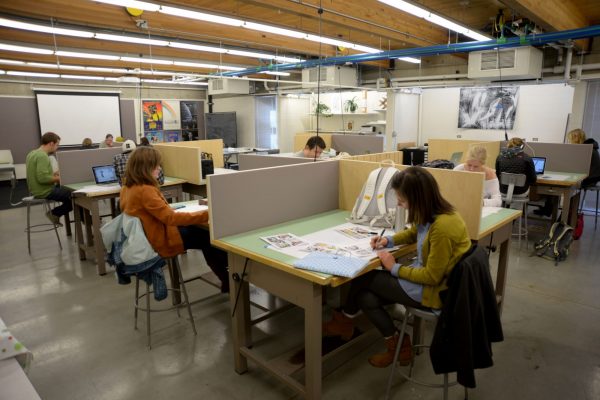
Graphic design received dedicated computer lab space and a remodeled studio in 2014, giving more space for working, critique, and classroom spaces and to align the program with professional practices and standards of excellence.
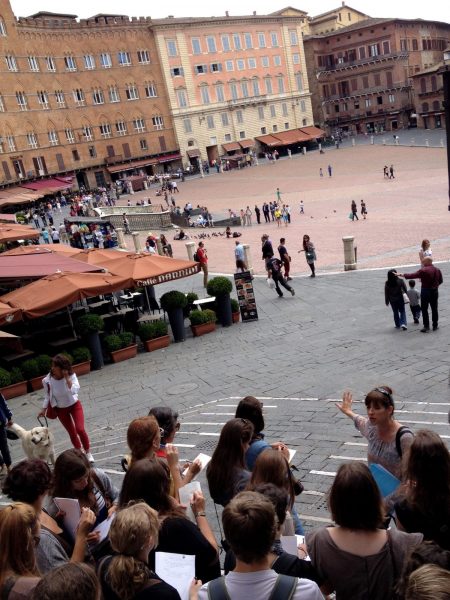
In 2014, the Department officially changed its name to the Department of Art and Art History. Art history provides a robust education in art through different cultures and history. Many of the professors in Art History are associate curators for the Gregory Allicar Musuem and create exhibitions for the museum, adding to the ongoing cultural dialog about the study and history of art. In this image, Dr. Cate DiCesare is teaching students on site in Italy.

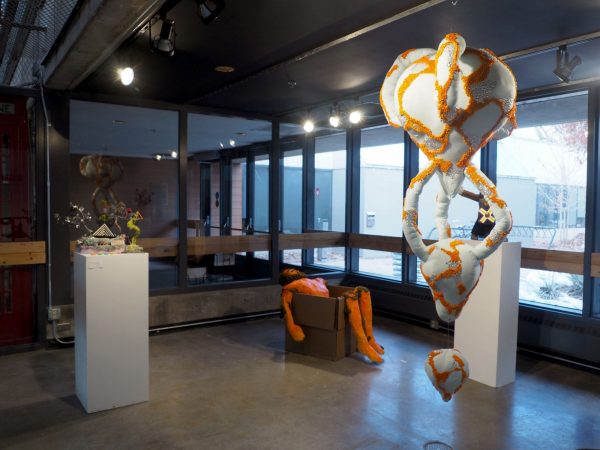
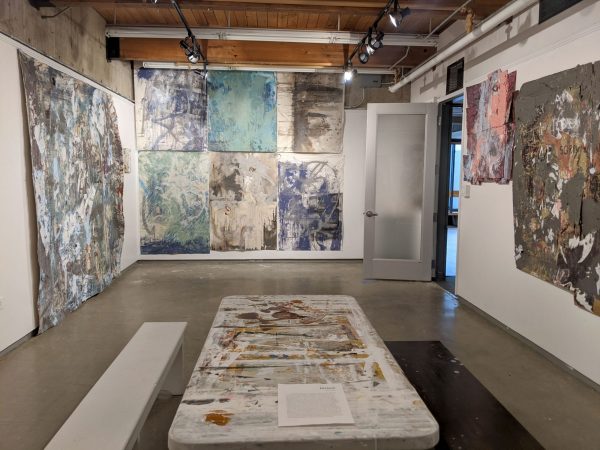
The Directions Gallery historically was a showcase for faculty’s art and creative research. Currently, visiting artists, graduate students, and faculty all exhibit work.
The Glassbox Gallery, on the left, and the Mini Gallery, on the right, offer gallery space to highlight undergrad and graduate student work and give exposure to professional practices such as hanging work and lighting and exhibition design. Exhibitions rotate on a weekly basis.
The Department of Art and Art History is a vital part of CSU’s past, present, and future. The historied past laid the foundation for the department. The unconventional building houses original research and creativity that enhances the culture in both the University and Fort Collins’ communities.
